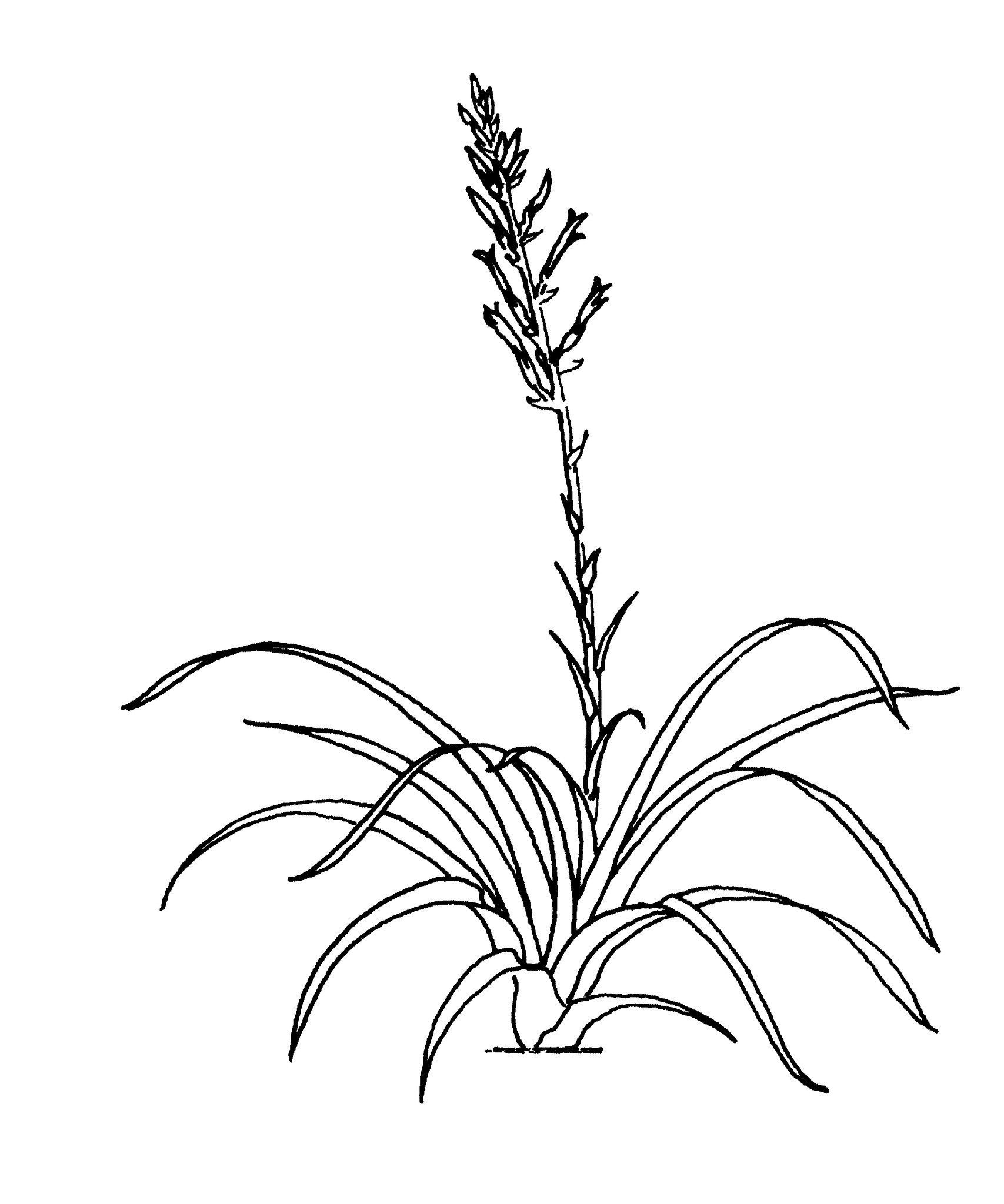
Plant flowering 15-150 cm. Leaves 20-100 cm long, 1-3.6 cm wide; sheath short, brown; blades linear. Inflorescence simple, very variable. Flowers irregular; flower stalks 0.8-3.5 cm long; sepals narrowly triangular, 1.5-3.5 cm long; petals erect, red or yellowish-white, 5-6 cm long. Ovary superior. This is the most common species in cultivation and is quite hardy.
South-eastern Brazil
P. burle-marxii Braga & Sucre Brazil (Espirito Santo) to 45 cm high. Leaves uniform; sheath entire; blade serrate in the lower part; green with a greyish covering above, purple-red beneath. Inflorescence simple on a purple scape. Flowers irregular; flower stalks 6-8 cm long; sepals orange; petals red.
P. staminea Lodd from south-eastern Brazil grows to 1 m high. Leaves 20-30, all alike, persistent, 30-60 cm long, slightly narrowed but not stalked; sheaths large, pale; blades linear, 12-18 mm wide, entire. Scape slender. Inflorescence laxly racemose, to 30 cm long, floral bracts 1 cm long. Flowers spreading, flower stalks slender, to 3 cm long; sepals green; petals 6 cm long, equally recurved at flowering, red; filaments red. Ovary two-thirds superior.
Source: (2005). Bromeliaceae. In: . Horticultural Flora of South-eastern Australia. Volume 5. Flowering plants. Monocotyledons. The identification of garden and cultivated plants. University of New South Wales Press.
